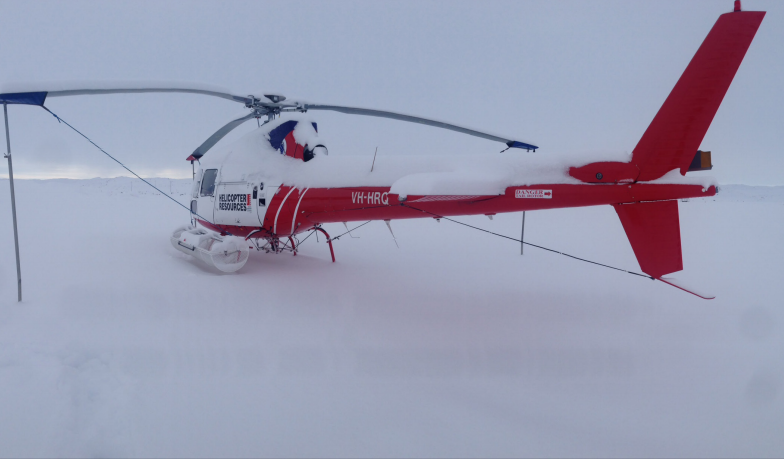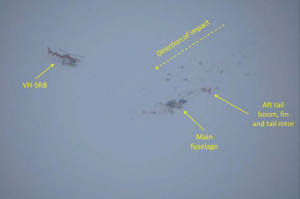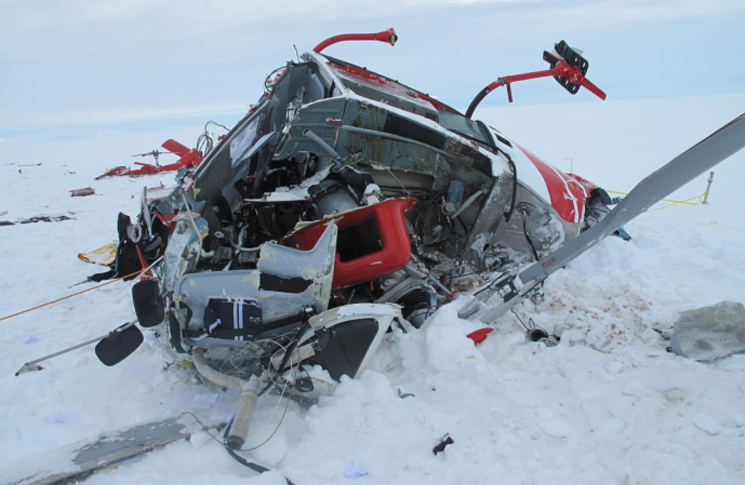Deteriorating weather conditions, spatial disorientation and the pilot’s failure to monitor the instruments led to an Aerospatiale AS350B2 helicopter crash in Antarctica in 2013.
In its report released on Monday, the Australian Transport Safety Bureau (ATSB) said the accident occurred after the pilot became disoriented due to a loss of visual cues and a ‘breakdown of the pilot’s scan of his flight instruments, resulting in collision with terrain.’
The pilot and two passengers were seriously injured and could not be evacuated until weather cleared the next day.
The ATSB said the accident ‘provides a timely reminder to flight crews of the importance of monitoring the flight instruments when encountering areas of reduced visual clues.’
Another Aerospatiale AS350B2 helicopter flying along side witnessed the crash, with those on board providing first-aid and assistance to those injured.

The two helicopters were transporting scientists from a penguin rookery at Cape Darnley after flying out earlier in the day. Roughly a third of the way through their 360 km return flight, both pilots noticed ‘a rapid reduction in surface definition’ and after a brief discussion via radio decided to head back towards a fuel cache where they had refuelled 20 minutes earlier.
But when the lead helicopter started to turn right at a bank angle of 15 degrees, the pilot failed to notice the aircraft had started to descend.
As the ATSB stated, ‘The difficulty in the flat-light conditions of assessing the helicopter’s attitude and altitude and distance and closure rates to objects increased the importance of the pilot scanning the aircraft instruments during the attempted right turn.
‘During the right turn from an entry height of 150 feet above ground level, the helicopter started descending and the pilot did not monitor the flight instruments in time to detect and correct the descent.’
Despite the helicopter’s radar altimeter (RADALT) sounding the aural alarm at 120 ft above ground level (AGL) and the pilot scanning the instrument—noting the height reducing through the 100 ft barrier—the helicopter still crashed to the ground shortly after.
ATSB Chief Commissioner Martin Dolan, said this accident serves as yet another reminder how weather can change very quickly and turn a routine flight into a tragic accident in poor visibility conditions. This is particularly the case in Antarctica.
Mr Dolan said, ‘Between 1993 and 2013 there were 11 accidents involving inadvertent visual flight into ‘instrument meteorological conditions’, such as poor weather or cloud’.

The ATSB report noted that during flat-light and whiteout conditions, which can occur rapidly, the transition from visual flight to instrument flight is ‘essential to maintain the aircraft attitude and avoid spatial disorientation.’
Following this accident the operator introduced new helicopters with an autopilot to reduce pilot workload. They also introduced simulator training by an experienced Antarctic pilot, a situation awareness course, and training on the limitations of the radar altimeter. The operator also provides decision-making guidance for early avoidance of unexpected white-out conditions.
Flight Safety Australia studied the effects of spatial disorientation on the human body and was fortunate enough to have QF32 Captain Richard de Crespingy take the Barany chair test, helping illustrate that every pilot is susceptible to the condition.
‘There is no experience, nothing you can do that can take away that rolling sensation,’ says de Crespingy. ‘You just have to understand it exists and respond to it, and that means following the instruments.’
Read the full investigation report on the ATSB’s website and learn more about spatial disorientation by reading Don’t believe your ears or by watching the video below.





